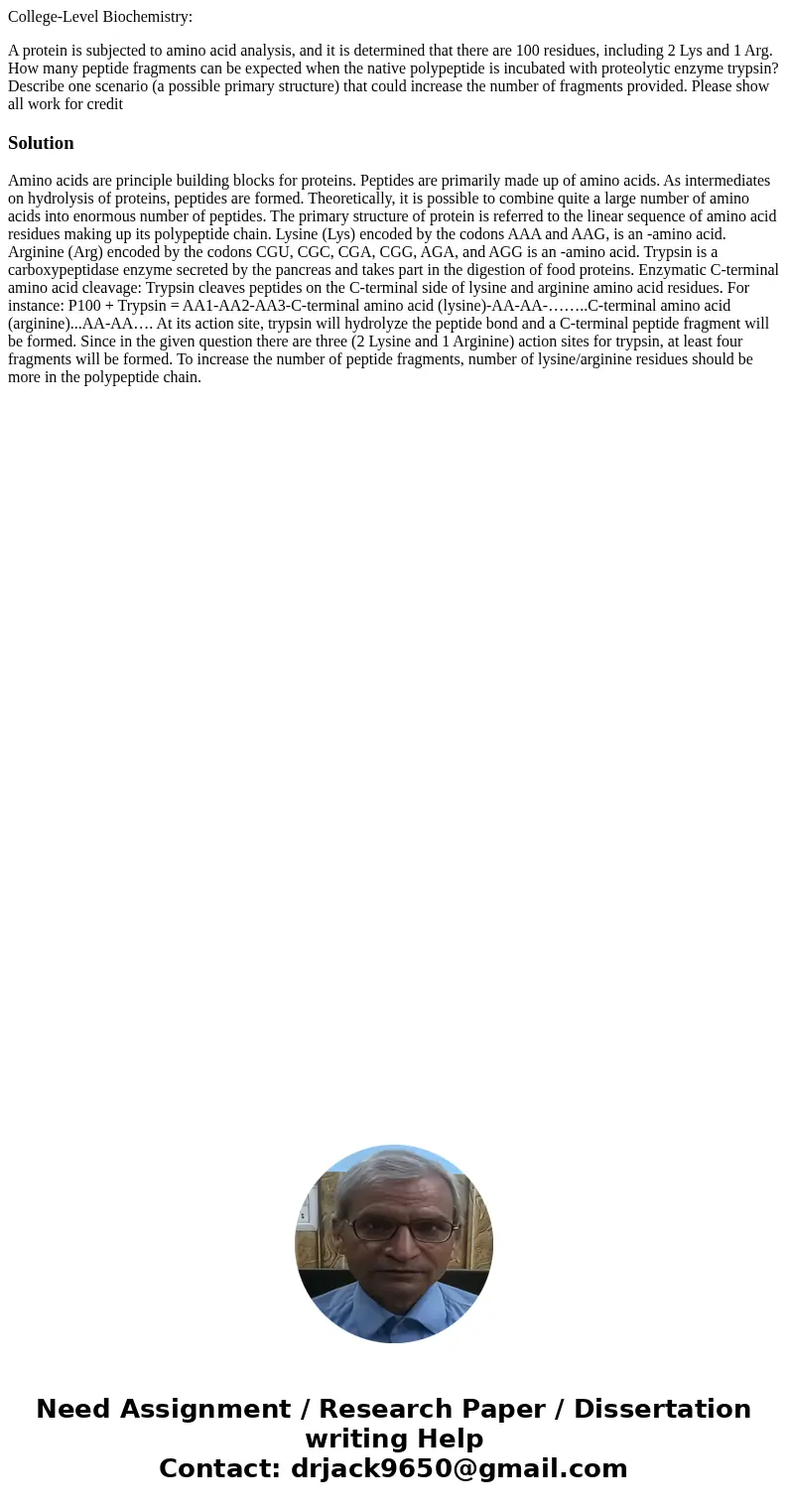CollegeLevel Biochemistry A protein is subjected to amino ac
College-Level Biochemistry:
A protein is subjected to amino acid analysis, and it is determined that there are 100 residues, including 2 Lys and 1 Arg. How many peptide fragments can be expected when the native polypeptide is incubated with proteolytic enzyme trypsin? Describe one scenario (a possible primary structure) that could increase the number of fragments provided. Please show all work for credit
Solution
Amino acids are principle building blocks for proteins. Peptides are primarily made up of amino acids. As intermediates on hydrolysis of proteins, peptides are formed. Theoretically, it is possible to combine quite a large number of amino acids into enormous number of peptides. The primary structure of protein is referred to the linear sequence of amino acid residues making up its polypeptide chain. Lysine (Lys) encoded by the codons AAA and AAG, is an -amino acid. Arginine (Arg) encoded by the codons CGU, CGC, CGA, CGG, AGA, and AGG is an -amino acid. Trypsin is a carboxypeptidase enzyme secreted by the pancreas and takes part in the digestion of food proteins. Enzymatic C-terminal amino acid cleavage: Trypsin cleaves peptides on the C-terminal side of lysine and arginine amino acid residues. For instance: P100 + Trypsin = AA1-AA2-AA3-C-terminal amino acid (lysine)-AA-AA-……..C-terminal amino acid (arginine)...AA-AA…. At its action site, trypsin will hydrolyze the peptide bond and a C-terminal peptide fragment will be formed. Since in the given question there are three (2 Lysine and 1 Arginine) action sites for trypsin, at least four fragments will be formed. To increase the number of peptide fragments, number of lysine/arginine residues should be more in the polypeptide chain.
 Homework Sourse
Homework Sourse